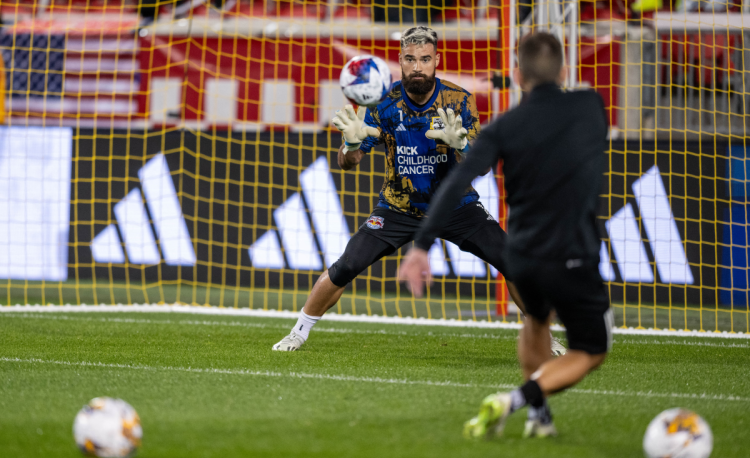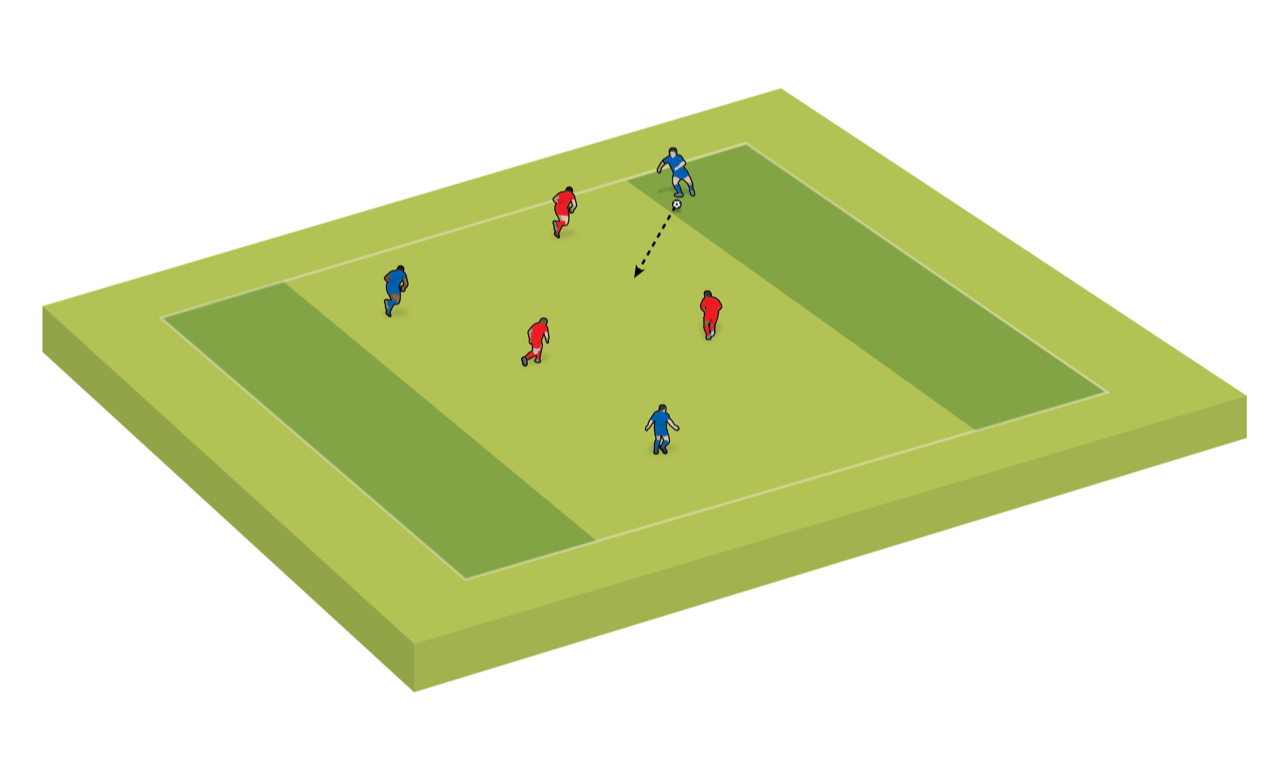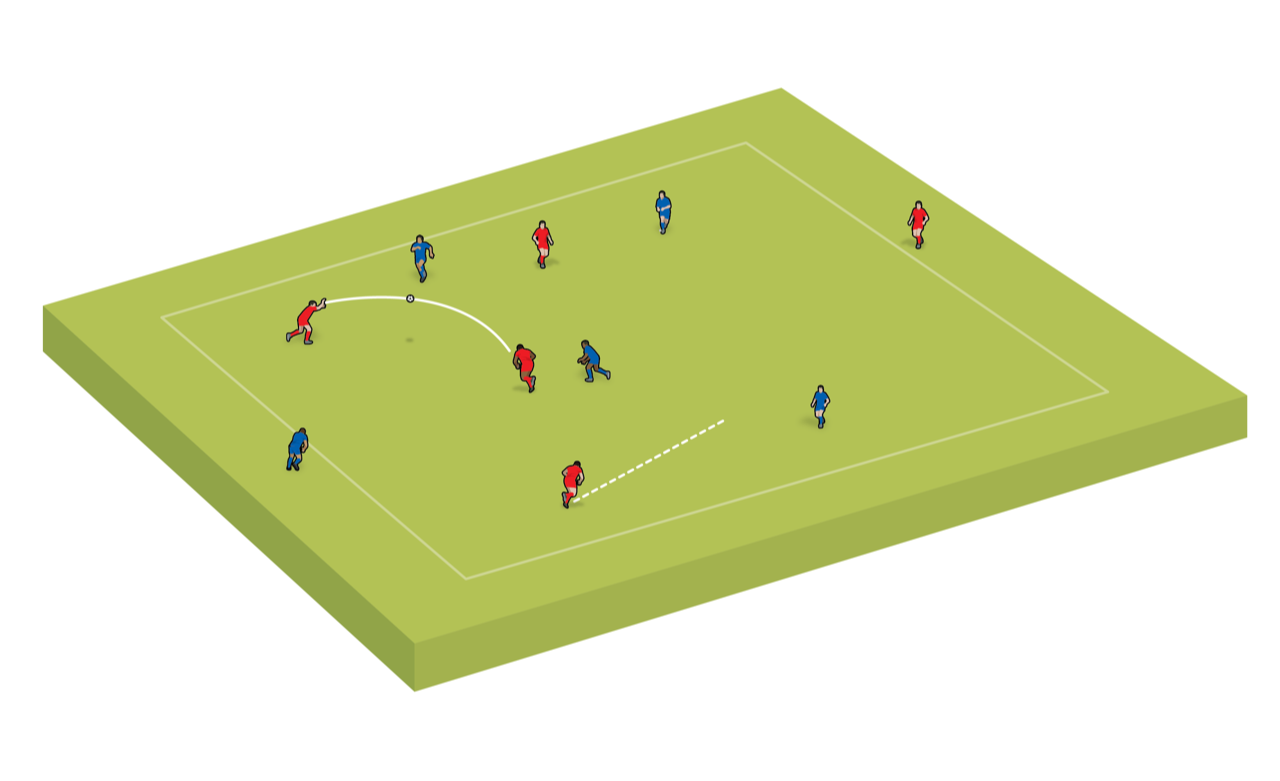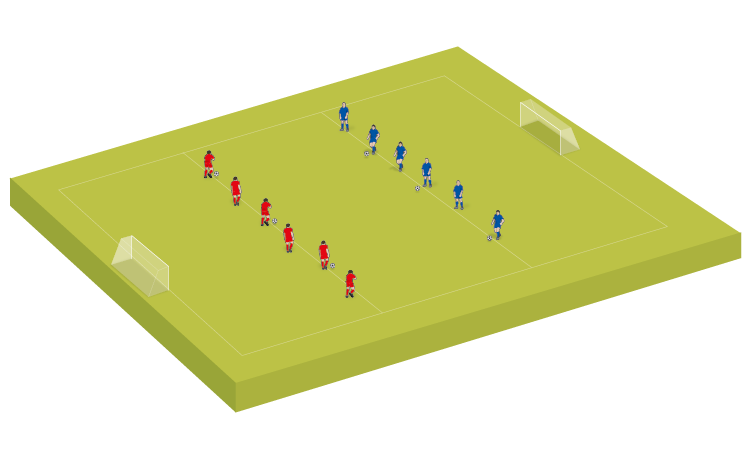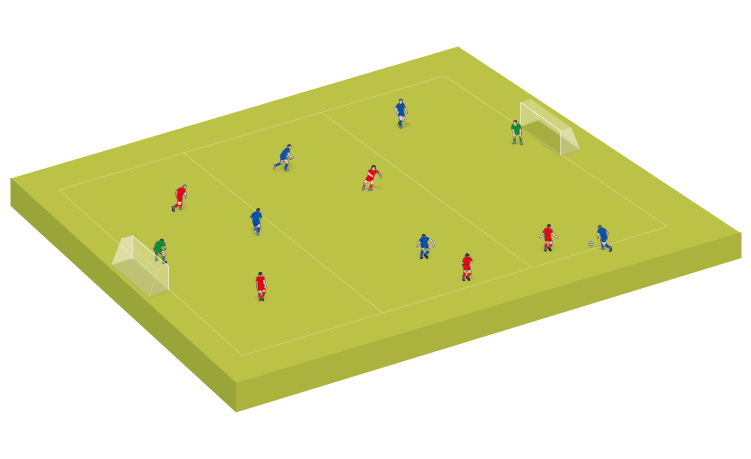How to warm up your goalkeeper on matchday
Keep it consistent and base it on your match plan: James Mayley’s guide to preparing your shot-stoppers on a physical, technical, tactical and mental level.
A warm-up is an essential element of matchday preparation for any player – and should leave a goalkeeper physically, tactically and psychologically prepared for the game they are about to play.
While there is no right or wrong way to warm up a goalkeeper, there are some general principles to follow. These include:
- Getting feedback from the goalkeeper about what they feel they need in order to prepare for the game
- Ensuring all elements of the goalkeeper’s role are covered – these are defending the goal and defending space when out of possession; starting and supporting build-up play when out of possession; and communicating, whether in or out of possession
- Gradually ramping up the intensity and complexity of the exercises while managing the goalkeeper’s workload.
Tips for building your goalkeeper warm-up
Plan ahead
If a goalkeeper warm-up isn’t planned ahead of time, it will be easy for it to fall by the wayside on matchday.
Make sure you have a clear idea of what the warm-up is going to be and how it is going to be executed.
Plan it with the same detail as you would a warm-up for your outfield players.
Understand your limitations
Think about the space you have available – can you warm up on the field or must you be off it? Can you warm up in a goal or are there no goals available?
It is also very important to think about the time you have available. The answers to these questions can help dictate what the warm-up should look like.
Consider your equipment
What do you need to make the warm-up successful?
Balls and gloves are obvious. Things like flat markers, cones and poles may also be useful. If, for example, you can’t warm up on the pitch, poles can be used to give keepers a goal reference, while flat markers can be used to set out a penalty area.
It’s best to be fully prepared with everything you may need – you never know what the set-up may be when you get to an away venue, or what conditions you may have to adapt to.
Know who’s taking the warm-up
You may have a dedicated goalkeeper coach, a regular assistant, infrequent parent help, or you might coach solo. The less support you have, the more difficult it may be to warm-up the goalkeeper.
If you have an assistant, or there is a parent supporting, ask them to do it.
If it’s just you, think about if players can do it together – whether it’s two goalkeepers, or a goalkeeper and a striker. The latter arrangement allows the striker to practise some shooting.
There are, potentially, a few bits the keeper can do solo, too, like kicking the ball up and catching it.
Whoever does the warm-up, it’s important that they know what to do – which is where effectively planning, and sharing it, comes in.
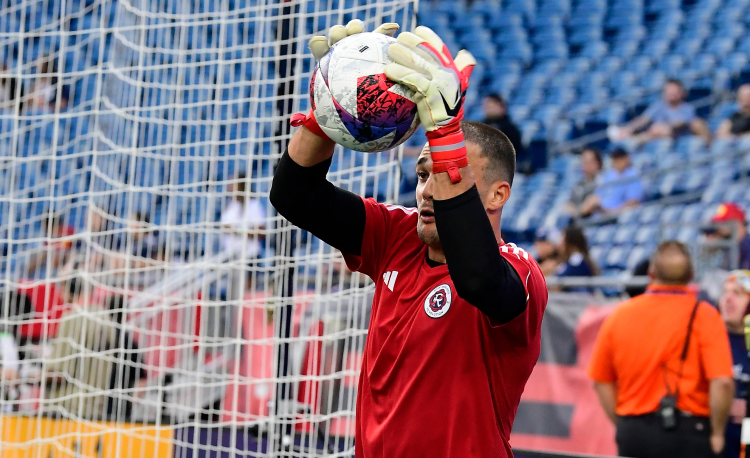
Think about what can be integrated into the outfield warm-up
There is nothing to say that a goalkeeper’s warm-up has to be done completely independent of the outfield group.
Parts of the outfielders’ warm-up – such as initial stretches, or a rondo – can involve goalkeepers. The latter allows the keepers to sharpen up their footwork.
It could be that you add in specific challenges for goalkeepers. If outfield players are passing a ball between each other, for example, can the goalkeepers do the same, but by throwing it between them?
This tactic is particularly useful if you have limited support staff on matchday.
Keep it consistent
There may be little tweaks here and there, dependent on the opposition, but keeping the structure and content of the pre-match warm-up as consistent as possible will mean your goalkeeper will know what to expect, no matter who is delivering it.
Monitor your keeper and adapt
Keep an eye on the goalkeeper during the warm up and how they are responding
If they are tiring quickly, don’t be afraid to slow things down or decrease the intensity. If they are not focused, don’t be afraid to mix things up to give them a new challenge.
Let your goalkeeper lead
Each goalkeeper is different. Some want a significant say in the activities they do, while others simply want to be told what to do.
Find out more about your goalkeeper and how they like to work. When working with a new ’keeper, always get their input into what they have done before and be cautious about changing too much if they are happy with their current structure.
Example warm-up
This example warm-up follows the structure I currently use with my goalkeepers.
Note that I’m currently working with adult keepers, with two in each matchday squad. I am the dedicated goalkeeper coach, meaning I lead the warm-up with them.
This example is intended to give you some ideas about structure and warm-up design, for you to adapt as you wish, based on your environment and your goalkeepers.
Timings
We head out 55 minutes before the start of a match and finish the warm-up 15 minutes before kick-off.
This 40-minute window allows us to cover a general pulse-raiser, plus dynamic movements, distribution, handling, footwork, shot stopping, 1v1s and crossing, before joining the attackers for finishing exercises.
"Some want a say in the activities they do, others simply want to be told what to do..."
The goalkeeper then has 15 minutes to return to the changing rooms, get into their matchday kit and be match-ready five minutes before kick-off.
The warm-up is split into a general activation, followed by five blocks of seven minutes each, with a clear focus to each.
General activation – 5 minutes
The first five minutes of the warm-up are player-led.
The goalkeepers work through a general pulse-raiser and some dynamic movements to prepare physically for the match.
We use the time during these dynamic stretches to discuss our three cue words for the game, which have been agreed based on the development goals in training and expected tactical dynamics of the game to come.
Distribution – 7 minutes
For the first of the five blocks, we work on the goalkeeper distributing the ball.
We start with some simple short passing before moving on to low, driven passing. These passes will ideally take place over match-realistic distances and pitch locations.
We then move into practising any passing patterns we expect to play in the upcoming game. This often involves replicating playing to a centre-back and receiving the ball back, before playing either a mid- or long-range pass to a target area.
The distribution finishes by practising long-range passing, where the goalkeeper receives the ball before quickly setting a counter-attack into the channels.
We ensure the goalkeepers practise passes over short-, mid- and long-range distances from both hands and feet.
The principle is to practise passes we anticipate the goalkeeper will play most in the game, based on our game model and tactics for that day.
These activities may therefore be adapted slightly from match to match, based on where we anticipate the spare player or space for the keeper to pass to will be.
Related Files
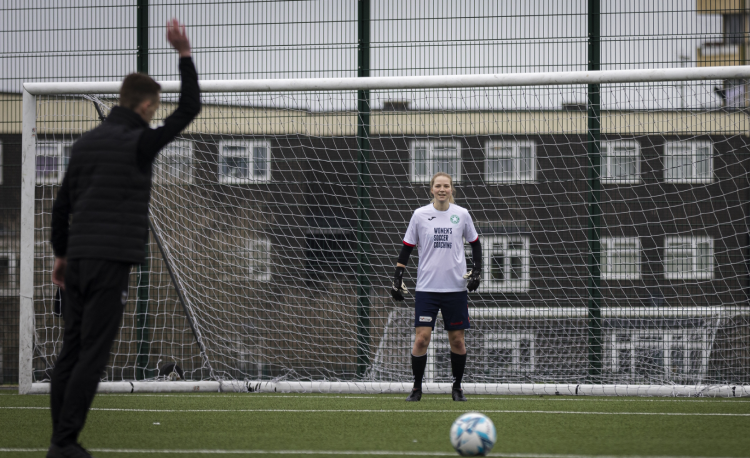
Footwork and handling – 7 minutes
For this block, we move into a mini goal.
To get the goalkeeper’s hands warm, we begin with some volleys. While we typically avoid volleys in training, the keepers like them pre-match in order to gain their focus, before progressing to more complex work.
Then we do some footwork practice, moving forwards and backwards through cones placed to the side of the goal before facing a strike at pace from 12-14 yards out.
For the second set, we move the service to 20 yards and begin striking the ball with the laces rather than the in-step.
We finish the mini-goal work with two sets of two-touch 1v1s from six yards, where the goalkeeper decides whether to block, spread or smother the ball.
Each set of work consists of six strikes at goal to deal with, which we find balances the needs of sufficient repetition while allowing up to two goalkeepers to get through the workload in seven minutes.
Defending the goal – 7 minutes
Following our mini-goal work, we move into the full-size goal. Here, we work different movement patterns into a set position, either working backwards on an angle or off the post from a cut-back position, to then deal with a shot or 1v1 which is unknown to the keeper. Again, we work off three sets of six strikes.
"The principle is to practise passes the goalkeeper will play most in the game..."
Defending crosses – 7 minutes
The final work we do as a goalkeeper group involves dealing with crosses.
Here, I will put a cross in while the second keeper will act as mild pressure or provide a shot on goal if the ball is out of the keeper’s reach.
We work with both driven and in- and out-swinging crosses, while I will also vary the trajectory and speed on the ball in an attempt to meet the demands of the game which the keeper is about to face.
Team finishing – 7 minutes
Finally, the goalkeepers join the team’s finishing activity to finish their warm-up.
As this is potentially a very physically demanding aspect of the warm-up for the goalkeepers, the first-team keeper goes in goal first and steps out when they are happy with the work they have done.
It is important to manage the keepers’ fatigue before a game and ensure they do not perform too many explosive actions in quick succession as there is minimal, if any, rest between shots.
Summary
The sole purpose of the warm-up is to prepare goalkeepers physically, technically, tactically and mentally to perform as well as possible in the upcoming match.
There are numerous ways to achieve that outcome, with planning and listening to your goalkeeper vital elements to getting there.
Newsletter Sign Up
Coaches Testimonials

Gerald Kearney, Downtown Las Vegas Soccer Club

Paul Butler, Florida, USA

Rick Shields, Springboro, USA

Tony Green, Pierrefonds Titans, Quebec, Canada
Subscribe Today
Discover the simple way to become a more effective, more successful soccer coach
In a recent survey 89% of subscribers said Soccer Coach Weekly makes them more confident, 91% said Soccer Coach Weekly makes them a more effective coach and 93% said Soccer Coach Weekly makes them more inspired.
*includes 3 coaching manuals
Get Weekly Inspiration
All the latest techniques and approaches
Soccer Coach Weekly offers proven and easy to use soccer drills, coaching sessions, practice plans, small-sided games, warm-ups, training tips and advice.
We've been at the cutting edge of soccer coaching since we launched in 2007, creating resources for the grassroots youth coach, following best practice from around the world and insights from the professional game.
